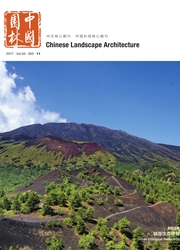

 中文摘要:
中文摘要:
通过世界遗产中8个矿业城市的案例分析,发现矿业遗产城市的概念及其在景观形态演化中,表现出"更替与回归"的规律,即随着矿业生产和城市的发展,不断发生更高阶段的城市生活性景观对前期生产性景观的更替。这个过程会因矿业资源的枯竭而冻结,最终产生向矿业生产原初景观的回归。过程中的4大影响动力包括矿业生产、社会分异、城市发展和时代潮流,其中矿业生产是形成矿业遗产城市景观的基础,其他要素则为城市增添了多样性的空间和活力。各个要素之间发生复杂的交互作用,导致更替与回归过程的发生,主要表现在选址环境、公共空间、分区布局和形式风格4个方面。
 英文摘要:
英文摘要:
Through the case study of eight mining cities listed in the World Heritages, this paper proposes a theoretical assumption of "replacement and return" for the landscape of mining cities, which means that with the mining production and urban development, higher- level living landscapes are continuously replacing earlier productive landscapes, and this process will eventually stop due to the exhaustion of mining resources, and then the original landscape of mining production will return. The tour primary influence factors during the process include mining production, urban development, social differentiation, temporal characteristics, among which mining production is the basis of forming the mining heritage urban landscape while other factors add diversified spaces and vitalities. These factors interact with each other and result in the evolution and a final return to its mining origin, which are mainly embodied in the four aspects of site physical environment, public space, partition layout, form and style.
 同期刊论文项目
同期刊论文项目
 同项目期刊论文
同项目期刊论文
 期刊信息
期刊信息
